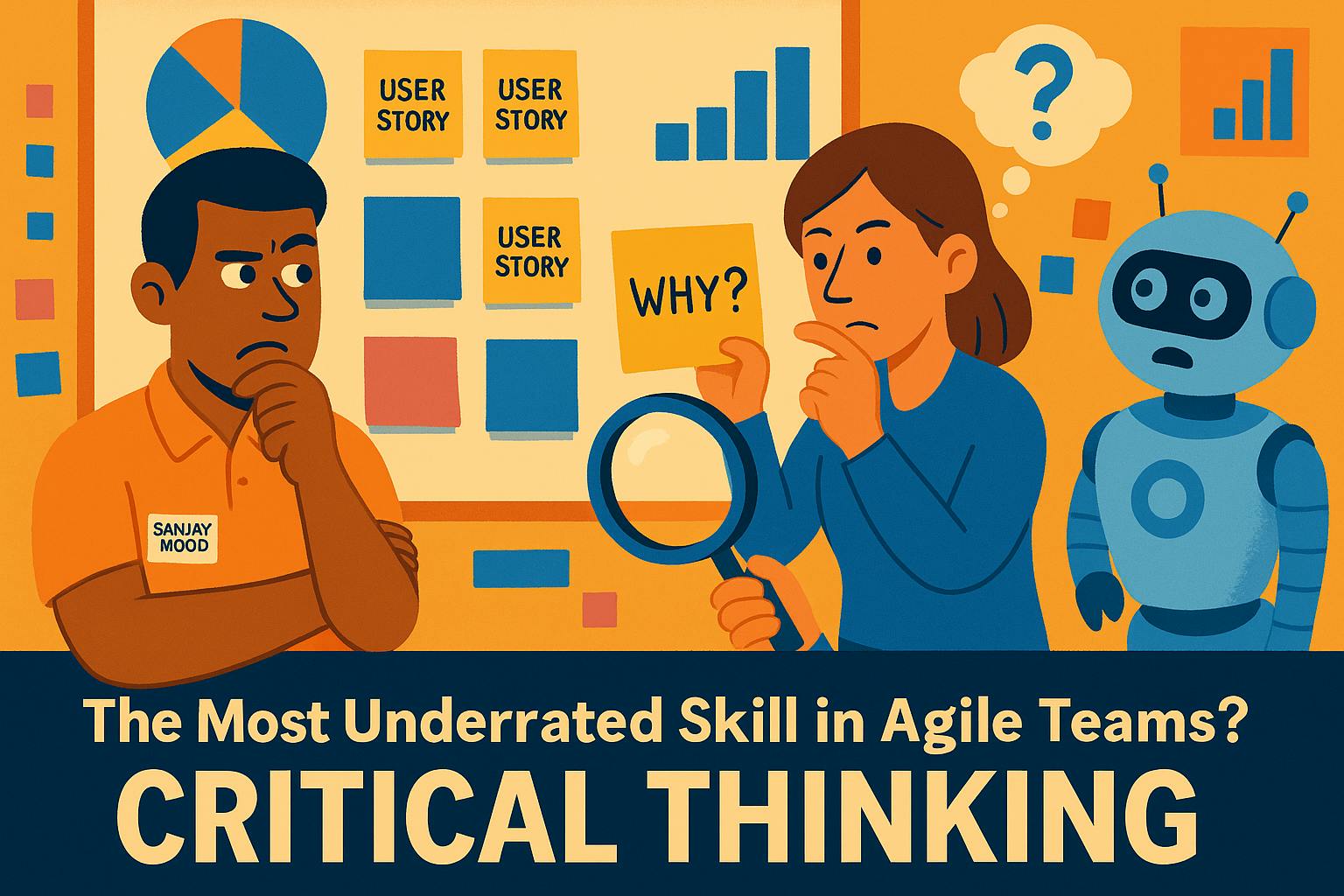Agile teams today have retros, standups, backlog refinement, Jira boards, and even AI tools that help draft user stories and summarize sprint progress.
But ask yourself this:
When was the last time someone on your team actuallyquestioned something?
Not in a “let’s raise a blocker” kind of way. I mean really questioned it—"Why are we solving this problem? Is this still the right approach? Do these metrics mean anything?" In all our sprints toward velocity, automation, and standardization, we’re losing something that used to define great teams: critical thinking.
Agile Was Built on Thoughtful Pushback
The Agile Manifesto didn’t start with a Jira template. It started with uncomfortable conversations. Developers, product people, and customers are questioning the status quo and proposing something better. That’s what made it powerful.
But somewhere along the way, we swapped thoughtfulness for templates. Now, user stories read like cookie-cutter checklists. Sprint ceremonies feel like they run on autopilot. And if someone dares to question a workflow or raise a deeper concern? It’s seen as disruption—not insight. We’ve built Agile engines so efficient, we forgot to ask whether they’re driving us in the right direction.
Automation Isn’t the Enemy—Passive Thinking Is
This isn’t about bashing tools. I love a good AI summary as much as anyone. But if all we do is feed stories into a tool and follow the steps, we start mistaking “activity” for “alignment.”
Just because a team is moving fast doesn’t mean it’s thinking clearly.
I once sat in on a sprint review where a team demoed a new feature that worked flawlessly. It ticked every box in the Jira ticket.
But the stakeholders’ first question was:
“Why did we build this again?”
Turns out, the priorities had changed, focus was shifted. But no one asked the hard question before the sprint started. The team delivered perfectly—on something that no longer mattered.
Signs Your Team’s Thinking Muscle Is Weak
Here are a few red flags I’ve seen:
🚩 Every user story sounds the same.
🚩 Retrospectives surface surface-level feedback: “Let’s communicate more.”
🚩 Sprint planning is just an estimation exercise.
🚩 No one askswhysomething’s in the backlog.
🚩 Decisions are made to “unblock” work—not to solve real problems.
Sound familiar?
How to Bring Critical Thinking Back
💬 Make space for “What’s the real problem?” - Before diving into solutions, ask: Are we solving the right thing? This should be a regular part of backlog refinement—not a luxury.
🛑 Stop worshiping the Jira board. - Just because it’s in the backlog doesn’t mean it’s gospel. The best product decisions often start by removing things from the board.
🧭 Encourage thoughtful disagreement. - Great teams allow room for “I’m not sure this is the best idea.” It doesn’t slow things down—it prevents expensive mistakes.
Final Thought
Agile was never meant to be a process machine. It was meant to be a thinking framework—one that helps smart people work smarter, together.
So, before we chase the next AI plugin or workflow optimization, maybe we pause and ask:
Are we still thinking critically about the work we do?
Because in teams where everyone nods and no one questions, velocity may be high—but value is usually low.


